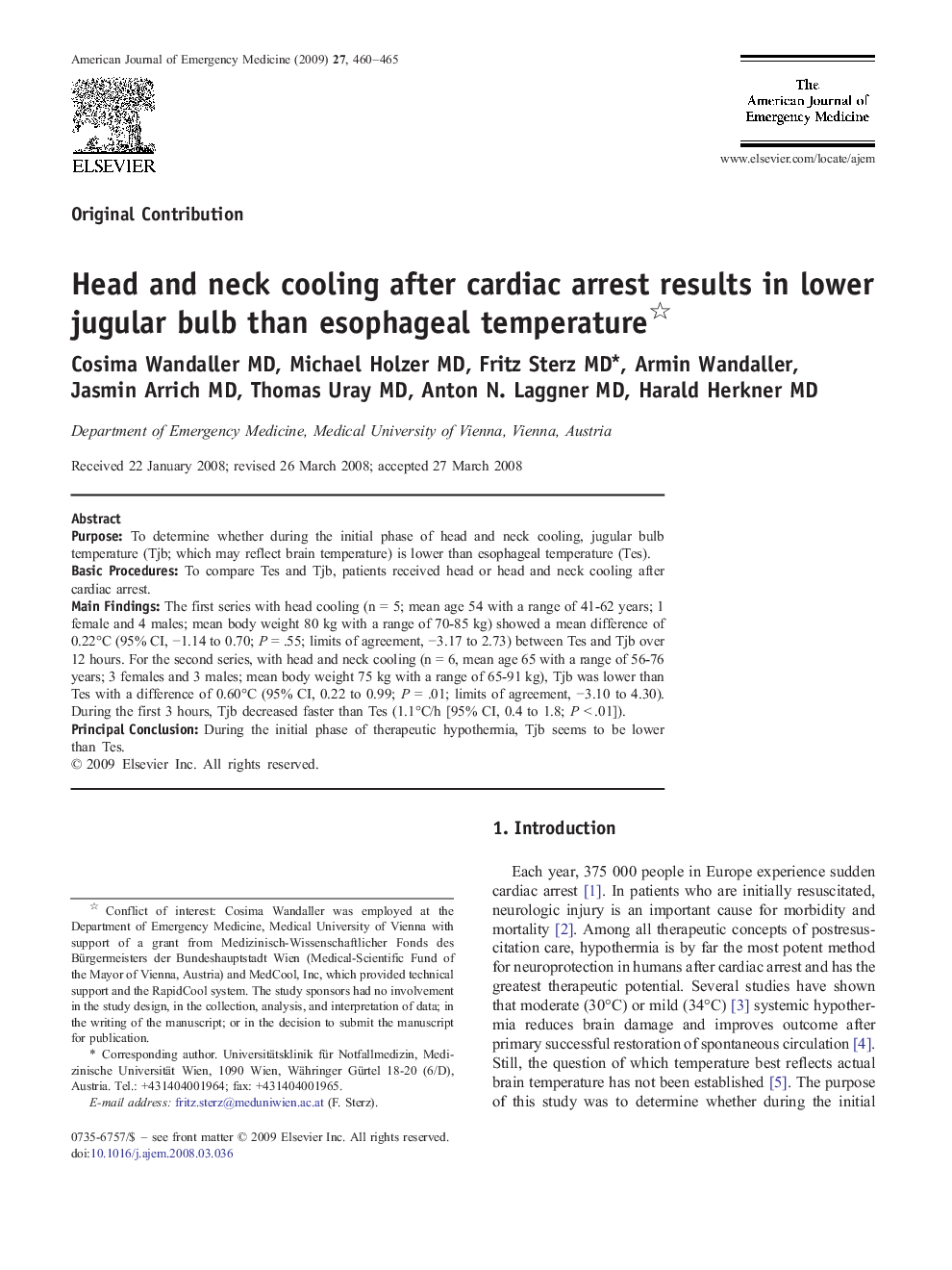| کد مقاله | کد نشریه | سال انتشار | مقاله انگلیسی | نسخه تمام متن |
|---|---|---|---|---|
| 3227266 | 1588167 | 2009 | 6 صفحه PDF | دانلود رایگان |

PurposeTo determine whether during the initial phase of head and neck cooling, jugular bulb temperature (Tjb; which may reflect brain temperature) is lower than esophageal temperature (Tes).Basic ProceduresTo compare Tes and Tjb, patients received head or head and neck cooling after cardiac arrest.Main FindingsThe first series with head cooling (n = 5; mean age 54 with a range of 41-62 years; 1 female and 4 males; mean body weight 80 kg with a range of 70-85 kg) showed a mean difference of 0.22°C (95% CI, −1.14 to 0.70; P = .55; limits of agreement, −3.17 to 2.73) between Tes and Tjb over 12 hours. For the second series, with head and neck cooling (n = 6, mean age 65 with a range of 56-76 years; 3 females and 3 males; mean body weight 75 kg with a range of 65-91 kg), Tjb was lower than Tes with a difference of 0.60°C (95% CI, 0.22 to 0.99; P = .01; limits of agreement, −3.10 to 4.30). During the first 3 hours, Tjb decreased faster than Tes (1.1°C/h [95% CI, 0.4 to 1.8; P < .01]).Principal ConclusionDuring the initial phase of therapeutic hypothermia, Tjb seems to be lower than Tes.
Journal: The American Journal of Emergency Medicine - Volume 27, Issue 4, May 2009, Pages 460–465